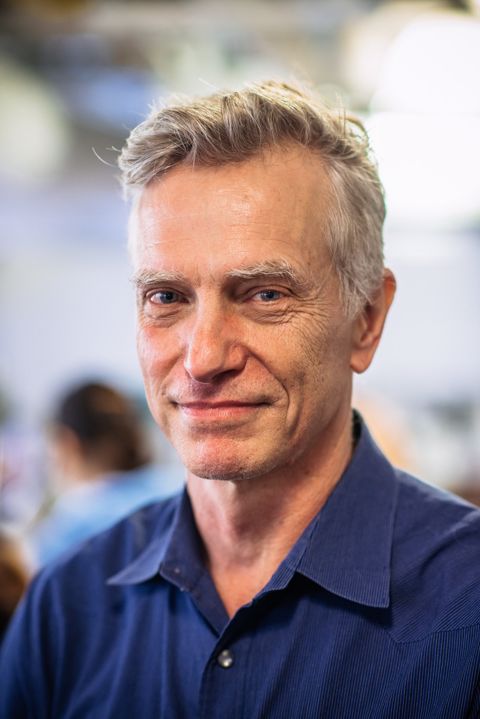Sculptor Joseph Havel to Retire as Director, the Glassell School of Art
Havel will return full-time to his studio, following 30 years as head of the Museum’s renowned art school
HOUSTON—NOVEMBER 9, 2021—Joseph Havel will retire as director of the Glassell School of Art of the Museum of Fine Arts, Houston, effective June 30, 2022.
In announcing Havel’s intended retirement from the Glassell School, Gary Tinterow, Director and Margaret Alkek Williams Chair of the Museum of Fine Arts, Houston, underscored the significance of Havel’s leadership over the past three decades. “Joseph Havel has made the Glassell School of Art an essential laboratory for creativity, seeding the city of Houston with three generations of artists who now occupy prominent positions in our community,” said Tinterow. “All of us at the Museum and the School are indebted to Joe for envisioning that potential and for realizing it, by working seamlessly with the Museum’s curators and educators, the art community in Houston, and well beyond.”
Havel (born 1954) relocated to Houston from Sherman, Texas, where he held the endowed Craig Chair in the Arts at Austin College, in 1991, to head the Glassell School of Art, the nation’s only museum-affiliated school serving students from pre-K to post-graduate. Under his direction over the following three decades, the school, its curriculum, and its reach evolved beyond the scope in place at the time of his arrival. The school’s Core program—a residency originally for artists that, under Havel, expanded in 1998 to include writers, as well—has become a renowned center for artistic experimentation and emerging artists and critics. Core fellows have included Julie Mehretu, Trenton Doyle Hancock, Shahzia Sikander, Leandro Erlich, Domenick Ammirati and Wendy Vogel.
Working closely with Steven Holl Architects, Havel developed the program for the school’s new facility, designed by Steven Holl and opened in 2018. The new facility provides individual wings for the Junior School students and the adult Studio School students with the two wings meeting at the central stairway in an atrium in the elbow of the L-shaped building. Most recently Havel oversaw the merging of the young artists program of the Junior School with the K–12 Learning and Interpretation programs of the MFAH, to reinforce access to the Museum’s collections as part of youth studio practice. Since Havel’s arrival as director, the school’s student enrollment has steadily grown.
While director of the Glassell School of Art, Havel continued to maintain his own studio practice. His sculptures and drawings have been exhibited extensively in the United States and abroad, and his work is in the collections of a number of museums, including the Whitney Museum of American Art in New York; the National Gallery of Art in Washington, DC; the Dallas Museum of Art; the Modern Art Museum of Fort Worth; the Menil Collection in Houston; the Museum of Fine Arts, Houston; and the Centre Pompidou in Paris. In 2013 Havel was named a Texas State Visual Artist by the Texas Commission on the Arts.
“While serving as director of the Glassell School, I always considered myself an artist first, making decisions for what is best for the school from an artistic point of view,” said Havel. “I now plan to devote my full energy towards my artistic practice, leaving a strong foundation for the new director.”
The Museum will initiate an international search for a successor later this year.
About the Museum of Fine Arts, Houston
Established in 1900, the Museum of Fine Arts, Houston, is among the 10 largest art museums in the United States, with an encyclopedic collection of nearly 70,000 works dating from antiquity to the present. The Museum’s Susan and Fayez S. Sarofim main campus comprises the Audrey Jones Beck Building, designed by Rafael Moneo and opened in 2000; the Caroline Wiess Law Building, originally designed by William Ward Watkin, with extensions by Ludwig Mies van der Rohe completed in 1958 and 1974; the Lillie and Hugh Roy Cullen Sculpture Garden, designed by Isamu Noguchi and opened in 1986; the Glassell School of Art, designed by Steven Holl Architects and opened in 2018; The Brown Foundation, Inc. Plaza, designed by Deborah Nevins & Associates and opened in 2018; and the Nancy and Rich Kinder Building, also by Steven Holl Architects, opened in 2020 Additional spaces include a repertory cinema, two libraries, public archives, and facilities for conservation and storage. Nearby, two house museums—Bayou Bend Collection and Gardens, and Rienzi—present American and European decorative arts. The MFAH is also home to the International Center for the Arts of the Americas (ICAA), a leading research institute for 20th-century Latin American and Latino art. mfah.org
Media Contact
Melanie Fahey, Senior Publicist
713.800.5345 | mfahey@mfah.org

